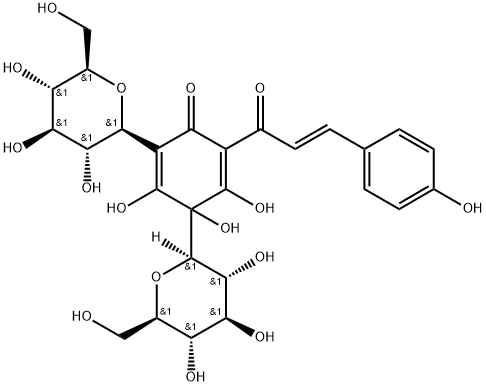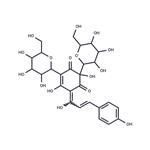Definition
ChEBI: Hydroxysafflor yellow A is a C-glycosyl compound that is 3,4,5-trihydroxycyclohexa-2,5-dien-1-one which is substituted by beta-D-glucosyl groups at positions 2 and 4, and by a p-hydroxycinnamoyl group at position 6. It is the main bioactive compound of a traditional Chinese medicine obtained from safflower (Carthamus tinctorius). It has a role as an anti-inflammatory agent, an antioxidant, a platelet aggregation inhibitor, an antineoplastic agent, a radical scavenger, an EC 3.2.1.48 (sucrose alpha-glucosidase) inhibitor, a neuroprotective agent and a plant metabolite. It is a C-glycosyl compound, a member of phenols, an enone and an enol.
Biological Activity
Hydroxysafflor yellow A is a pigment that has been found in C. tinctorius and has diverse biological activities. It inhibits LPS-induced increases in NF-κB levels and production of nitric oxide (NO), IL-1β, and TNF-α in primary mouse embryonic mesencephalic cultures when used at concentrations of 40 and 160 μM.
in vivo
Hydroxysafflor yellow A (1 and 3 mg/kg) decreases mean arterial pressure (MAP) and heart rate in anesthetized normotensive or spontaneously hypertensive rats. It reduces infarct volume and serum superoxide dismutase (SOD) activity in a rat model of focal transient cerebral is chemia induced by middle cerebral artery occlusion (MCAO) when administered at doses of 2, 4, and 8 mg/kg.




